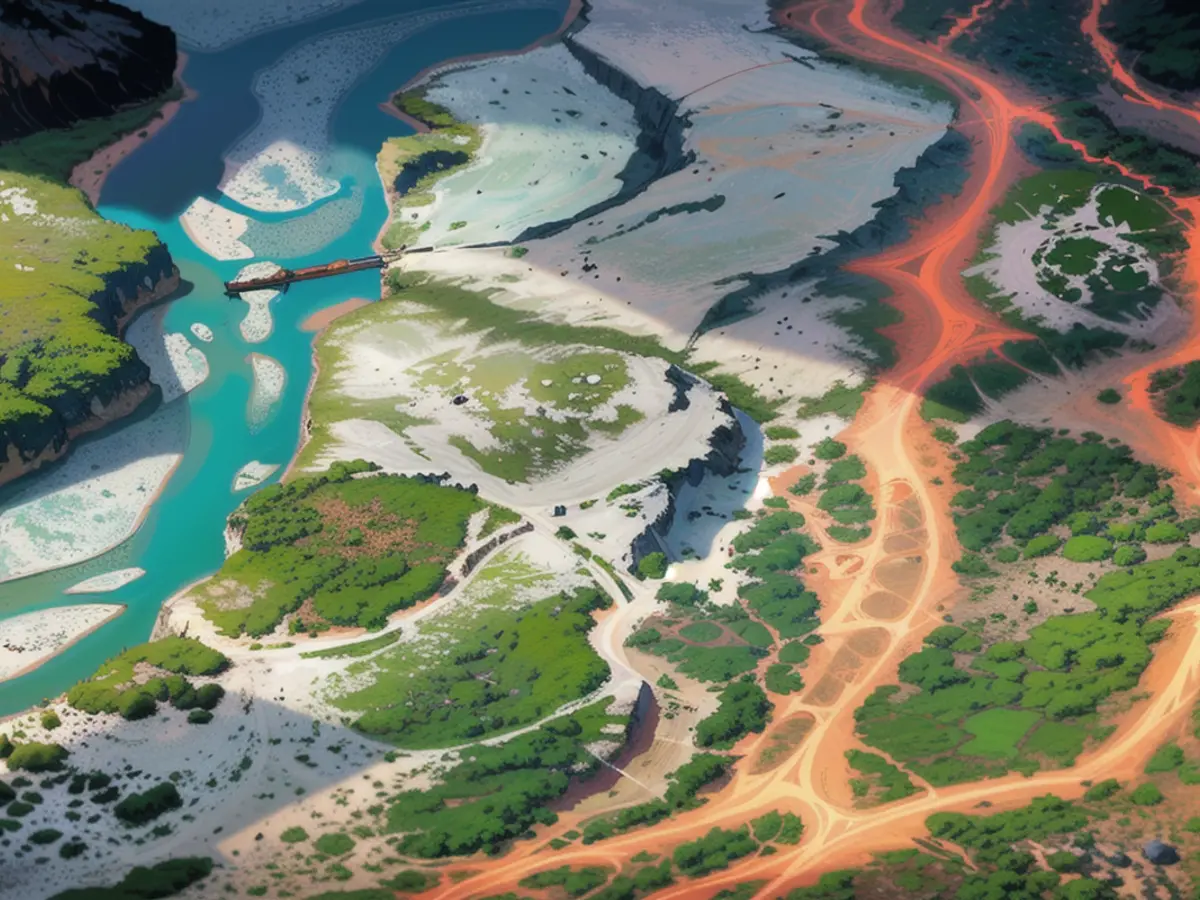Alaska's rivers take on a cloudy orange hue.
The waterways in northern Alaska were once crystal clear, but more and more of them seem to be turning orange nowadays. A team of researchers led by Jonathan O'Donnell from the National Park Service in Anchorage has identified a potential source for this mysterious change. They believe that as global temperatures rise, the permafrost beneath the ground is melting, causing shades of iron and toxic metals to seep into the rivers, giving them their orange hues.
In northern Alaska, approximately 75 rivers have been observed turning from clear to orange in recent times. The team, which includes experts from various scientific backgrounds, has published their findings in the journal "Communications Earth & Environment." They think that the melting of permafrost may lead to accelerated chemical weathering of minerals, microbial reduction of iron, and transportation of metals in the water supply. Iron is the main culprit behind the orange tinge, they said.
The scientists gathered information from various sources, such as observational reports by scientists, pilots, nature guides, tourists, and indigenous people. The affected rivers were mainly found along the Brooks Range, a mountain chain that stretches through the state of Alaska over 1,100 kilometers from west to east. Most of these rivers were remote, with few industrial areas nearby.
The discoloration was first spotted in 2018, but satellite images from ten earlier years show that the phenomenon had been slowly spreading for some time. O'Donnell, the lead researcher, believes the situation is likely to worsen as Canada continues to warm up. "As the permafrost keeps melting, we can expect the rivers to keep turning orange and the water quality to deteriorate," O'Donnell stated.
The orange coloration isn't just an eye-soother. O'Donnell clarified that these orange hued rivers can be toxic to the environment and also make it difficult for fish to reach their spawning grounds. "The orange-colored streams have a milky appearance that can be challenging because they're not only toxic, but they can impede fish migration," he explained.
In the laboratory, researchers studied samples collected from multiple trips and found that the pH value of orange-colored rivers is sometimes much lower than in non-discolored rivers. "This indicates that sulfide minerals are weathering, creating highly acidic and corrosive conditions that can release more metals," the statement from the University of California, Davis noted.
This transformation and the reduced diversity of large invertebrates and fish have been observed in certain areas, such as a station in the Kobuk Valley National Park near the Akillik River. Here, Dolly Varden trout (Salvelinus malma) and certain sculpin (Cottus cognatus) seem to have vanished following a sudden decrease in the river's pH level. Besides the environmental dangers, there's also a risk that contaminants could contaminate drinking water, making the situation even more concerning.

Read also:
- This will change in December
- Dikes withstand water masses so far - Scholz holds out the prospect of help
- Fireworks and parties ring in 2024 - turn of the year overshadowed by conflicts
- Attacks on ships in the Red Sea: shipping companies avoid important trade route
The team's findings on the orange rivers in Alaska highlight the interconnection between education and climate change, as they emphasize the importance of understanding and addressing the consequences of permafrost melting and its impact on nature conservation. Furthermore, the ongoing orange discoloration of these rivers underscores the need for about-turn approaches to environmental policies and sustainable resource management, particularly in regions like Alaska that are vulnerable to climate change.
Source: www.ntv.de







